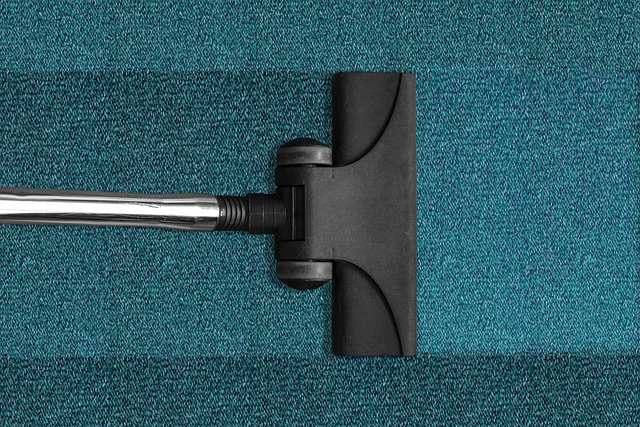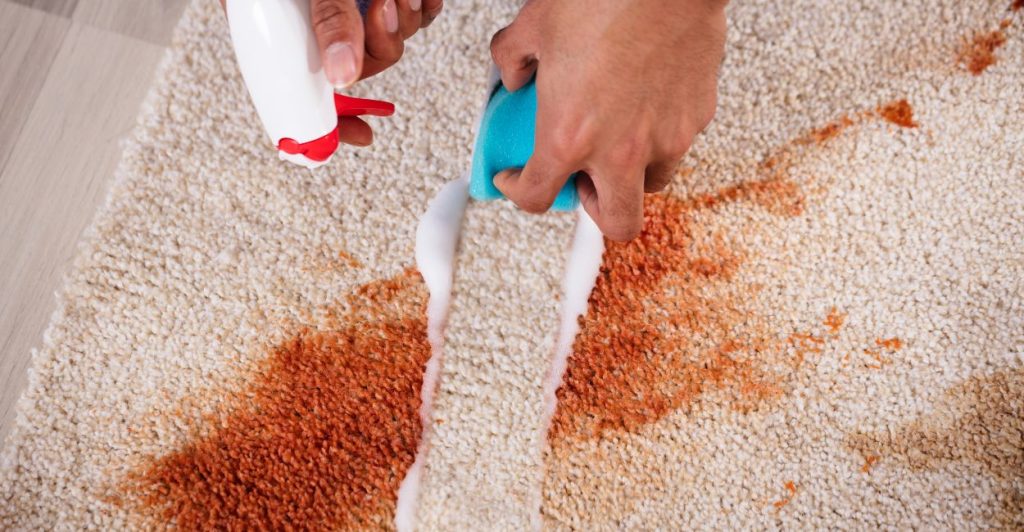Carpet Stain Removal Tips
The feel of carpet underfoot makes a house a home. If you have carpets in your home, then you probably also have experienced the angst of spills and stains and not knowing how to fix. While some carpet materials are more resistant to staining than others, all carpets are susceptible to staining if the mess is not tended to properly.
From spilled coffee to oil to tracked-in mud, it seems like there’s always something that can cause a stain. But don’t worry – we’re here to help! In this blog post, we will discuss some of the best ways to remove stains from your carpets. We’ll cover everything from basic tips to more advanced techniques. So whether your carpet is stained with red wine or pet urine, we have you covered!
First things first

It’s important to act fast when a carpet stain occurs. The longer the stain is left untreated, the harder it will be to remove. So if you spill something on your carpet, blot it up immediately with a clean, absorbent cloth. The correct way to blot is to press down on the stain with the cloth, rather than rubbing it back and forth. Absolutely under no circumstances should you ever rub a carpet stain! This will only cause the stain to spread and set into the carpet fibres, making it much harder (or even impossible) to remove.
Next steps

If the stain is still visible after blotting, try again!. As a rule, we don’t recommend you use carpet cleaning products that you can buy from supermarkets or hardware shops. Depending on what you carpet is made from they can cause permanent damage to the carpet and set or bleach stains. This is especially so if your carpet is made of wool. Synthetic carpets are more robust but if you do use shop bought products, please be sure to follow the instructions on the bottle carefully.
Most carpet stain removal products will require you to dilute the cleaner with water. Once you have applied the carpet cleaner to the stain, blot it again with a clean cloth to remove any excess. You may need to repeat this process several times before the stain is completely removed. However, not every carpet stain will respond to carpet cleaner. Notoriously difficult stains like oil, grease, red wine and pet urine often require more advanced methods. That’s because these types of stains actually penetrate the carpet fibres, rather than sitting on top of them. Once the stain has penetrated the fibres, it will be much harder to remove. But don’t despair – we have a few tips that may help!
Different types of stains require different treatments
Grease and oil carpet stains
Oil spills are one of the most frustrating things that can happen to your carpet or upholstery. Not only are they unsightly, but they can also be difficult to remove. However, with a little patience and the right approach, it is possible to get rid of an oil stain. The first step is to apply a dish-washing solution to the affected area. Now blot the spill with a colour-fast towel. Don’t forget to work from the outside of the stain towards the centre in order to prevent the stain from spreading. Once you have blotted up as much of the oil as possible, rinse the area with a warm, damp towel. Finally, dab the area dry with a clean colour-fast towel. If you are dealing with a large oil spill, you may need to seek professional help. But for smaller stains, following these simple steps should do the trick.
Red wine carpet stains
Tannins in red wine are quickly absorbed by carpet fibres, causing permanent staining. But don’t worry. That red wine stain doesn’t have to be permanent. As long as you act promptly, you can usually remove it from your carpet. The first step is to blot up as much of the wine as possible using paper towel or a plain white cloth. Start from the outside of the stain and work your way inwards to prevent the stain from spreading.
Once you’ve absorbed as much wine as possible, pour a small amount of cold water on the stain and continue to blot. This will help to dilute the stain. For tougher stains, combine 2 cups of cold water, 1 tablespoon of dishwashing liquid, and 1 tablespoon of white vinegar. Dampen a cloth with the solution and dab the carpet stain. Use a new cloth dipped in cold water to finish.
Coffee carpet stains
The key is to act quickly after the spill occurs. The longer you wait, the more time the coffee has to penetrate the fibres of the carpet and set in. If you’re able to remove the stain right away, you’ll have a much better chance of getting it out completely.
Here’s what you’ll need: a clean washcloth, water, stain remover, liquid detergent, vinegar. To start, blot up as much of the coffee as possible with the washcloth. Be sure to work from the outside of the stain inward to avoid spreading it further. Once you’ve absorbed as much liquid as possible, soak up any remaining coffee with a mixture of water and vinegar. Apply a small amount of liquid detergent to the area and scrub gently with a brush or toothbrush. You may need to repeat this step several times before the stain is completely gone.
Pet urine carpet stains
Whether you have a new puppy or an old cat, chances are you’re going to deal with pet stains at some point.
If you’re dealing with a new pet stain, the first thing you’ll want to do is soak up as much of the urine as possible. Make a thick layer of paper towels and lay them on top of the wet area, then cover it with newspaper. For best results, apply pressure to the wet area for about a minute before rinsing with cool water. Blot dry when finished. However, it’s not always the case that you catch your beloved pet in the act. If you find an old pet stain that has already set into your carpet, you’ll need to take a different approach. Consider renting a carpet cleaner, then use a pet-odour neutraliser to remove the lingering smell.
Different carpets require different approaches
Wool carpet – Wool is a natural fibre, so it’s important to be careful when cleaning it. Avoid harsh chemicals and detergents, as they can damage the carpet.
Nylon carpet – Nylon is one of the most durable carpet fibres, so it can withstand a little more scrubbing than other types of carpet. When cleaning a nylon carpet, be sure to use a mild detergent.
Polyester carpet – Polyester is a synthetic fibre, so it’s important to use products that are designed for synthetic carpets. You’ll also want to avoid using too much water, as this can damage the carpet.
Final thoughts
Whilst the above tips represent some of the best methods for removing stains from carpets, it’s always best to contact a professional if you’re unsure or if the stain is particularly stubborn. Working with an expert carpet cleaner that has the right stain removal skills and equipment gives you the best chance of getting your carpet looking like new again.
To find the carpet cleaning team that’s right for the job, ask them questions about their experience, what type of equipment they use, and what stain removal products (known as ‘spotters’ in the trade) they have. For instance, do they have CT Spot and Protein Spot (amongst others)? These products represent the best in enzymatic and protein-based stain removal (like blood stains) and are a vital part of any carpet cleaning technician’s toolkit.
At The Squeaky Clean Team, we carry a full range of carpet stain removal spotters and can provide you with the best advice for your particular carpet. If we can’t remove the stain, nobody can! Contact us today and let us help you get your carpet looking its best.

